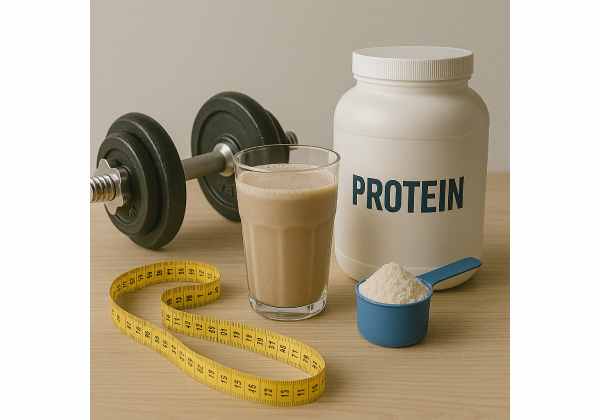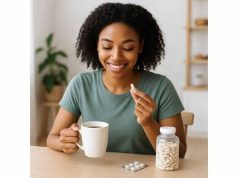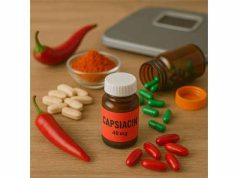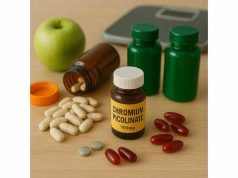
Protein shakes can make calorie control easier without constant hunger. They help you hit daily protein targets, protect lean muscle while you lose body fat, and simplify meal decisions on busy days. But not all powders are equal, timing matters, and “more” is not always better. This guide explains how protein shakes support weight loss, the right daily amount for your size and activity, the best types (whey, casein, soy, pea blends, and more), and how to avoid common pitfalls like hidden sugars or excessive calories. If you are weighing nutrition tools alongside prescriptions or supplements, see our overview of evidence-based medical options for weight management and then use this article to build a practical shake strategy you can keep.
Table of Contents
- What are protein shakes and do they help?
- How much protein per day for weight loss?
- When to drink protein shakes
- Best protein types compared
- Common mistakes and fixes
- Safety, who should avoid
- Sample plans and recipes
- Frequently Asked Questions
What are protein shakes and do they help?
Protein shakes are beverages made by mixing a powdered protein source with water or milk (dairy or plant). Popular sources include whey, casein, soy, pea, and blends. Their value for weight loss comes from three levers:
- Satiety: Protein is the most filling macronutrient per calorie. A shake before or in place of a meal can reduce total intake while keeping hunger tolerable.
- Muscle retention: In a calorie deficit, adequate protein helps preserve lean mass. Keeping muscle supports a higher resting metabolic rate and a tighter look as fat comes off.
- Convenience: Decision fatigue is a real obstacle. A ready plan for breakfast or a busy lunch reduces off-plan choices.
How much can shakes help? Expect practical advantages, not magic. People who hit a consistent protein target tend to report fewer cravings, better portion control at dinner, and less snacking. That steadier intake is what drives fat loss. A typical 150–230-calorie shake with 25–30 g of protein displaces a higher-calorie meal or snack and makes the rest of the day easier to manage.
Shakes also solve the “breakfast problem.” Many breakfasts are low in protein (pastries, cereal, juice). Swapping to a 25–35 g protein shake plus fruit or oats often curbs late-morning grazing and keeps energy even.
Shakes are tools, not entire diets. They work best when they’re plugged into a simple framework:
- Protein anchor at each meal (25–35 g)
- Fiber-forward plate (vegetables, beans, whole grains, fruit)
- Fewer liquid calories (sodas, sweetened coffees, juice)
- Strength training two or three days a week
If you are building fundamentals from scratch—calorie balance, protein targets, activity—our primer on safe weight-loss basics will get you oriented, then layer shakes where they fit.
Quick wins from protein shakes
- A controlled meal replacement when time is tight
- A pre-meal appetite check to reduce portions
- A post-workout dose to support recovery without overshooting calories
Bottom line: protein shakes help because they make the right choice the easy choice—enough protein, predictable calories, less friction.
How much protein per day for weight loss?
The right amount depends on your body size, training, and deficit size. For adults aiming to lose fat while keeping muscle, a practical daily range is:
- 1.2–1.6 g per kilogram of body weight for most people in a modest calorie deficit
- Up to ~2.0–2.2 g/kg if you are leaner, older, or training hard (because muscle preservation matters more and appetite may be higher)
For a 80-kg person, 1.2–1.6 g/kg equals 96–128 g/day. For a 65-kg person, that’s 78–104 g/day. You can exceed these targets safely if kidney function is normal, but higher intakes bring diminishing returns and can crowd out fiber-rich foods if you rely only on shakes.
Per-meal targets and the “leucine threshold”
Muscle protein synthesis is maximized when a meal delivers ~25–35 g of high-quality protein, typically containing 2–3 g of leucine. Most whey, soy, or blended plant shakes with 25–30 g of protein meet that threshold. Casein needs slightly more grams to match leucine content; collagen does not count toward this threshold (see Section 4).
How many shakes per day?
- Most people: 1 shake daily is enough to shore up protein while keeping real food central.
- If needed: 2 shakes can work during busy periods or while cutting calories more aggressively—pair at least one shake with fruit, oats, or a veggie side to keep fiber up.
- Rarely: 3+ shakes is usually unnecessary and can reduce dietary variety and micronutrient intake.
Where shakes fit into your total protein
Aim to get half to two-thirds of your protein from whole foods (eggs, fish, poultry, tofu, yogurt, legumes) for vitamins, minerals, and fiber alongside. Use shakes to fill the gaps:
- Breakfast short on protein? Replace it or add a shake.
- Late-night snacking? A shake can preempt it.
- Post-workout? A 25–35 g dose supports recovery without oversized meals.
Carbs and fat in shakes
For weight loss, a simple formula works: 25–35 g protein, 10–30 g carbs (from fruit or oats if desired), ≤10 g fat. Extra fat slows gastric emptying and can reduce fullness signaling per calorie. If you like pre-workout coffee with your shake or use caffeinated “protein coffee,” see our notes on timing and limits in caffeine and appetite control.
Muscle during a cut
If preserving performance or muscle is a major goal, consider progressive strength training and—if appropriate—adjuncts that help maintain training quality. For example, some lifters use creatine while dieting to sustain strength; learn more in our guide to creatine during fat loss.
Bottom line: Set a daily target (e.g., 120 g), plan three 30–35 g meals plus one 25–30 g shake, and adjust based on hunger, training, and progress.
When to drink protein shakes
Timing should solve a problem—cravings, chaotic mornings, or post-workout recovery—not create rigidity. Use these patterns to match your day.
1) Breakfast replacement or anchor
Many people undereat protein at breakfast and overeat later. A 25–35 g shake within an hour of waking steadies appetite and prevents mid-morning grazing. Add fruit or oats for fiber and staying power.
2) Pre-meal “appetite dial-down”
A shake 20–60 minutes before lunch or dinner reduces portion size naturally. This strategy works well for restaurant meals or social events: arrive less hungry and choose deliberately.
3) Post-workout recovery
A shake within two hours after training supports muscle repair. There is no magic 30-minute window; consistency matters more. If your next full meal is soon, you can skip the shake—hit your daily protein, not just post-workout protein.
4) Evening snack replacement
If late-night snacking is a pattern, a 25–30 g shake (or Greek yogurt) after dinner can close the kitchen. Choose low-sugar options and keep calories modest.
5) On-the-go meal replacement
Travel days and long commutes derail routines. A shelf-stable, ready-to-drink option or single-serve packets plus a shaker bottle turn travel into a controlled meal instead of a convenience-store gamble.
Should you stack caffeine with a shake?
Caffeine can curb appetite and boost training, but too much—especially after noon—hurts sleep and backfires the next day. If you use it, keep it to the morning and mind the total dose. We outline safe ranges and timing in our guide to caffeine for weight management.
Milk vs water
- Water: Lowest calories; clean taste if your powder mixes well.
- Low-fat dairy or fortified plant milk: Adds calcium, vitamin D, and more protein (especially with dairy or soy). Account for the extra calories.
Practical scheduling examples
- Workday: Breakfast shake → normal lunch → high-protein dinner
- Training days: Normal breakfast → training → post-workout shake → normal dinner
- Social evenings: Breakfast shake → balanced lunch → pre-dinner shake → lighter portions at the event
Bottom line: Pick one consistent window that solves your biggest eating challenge; add a second shake only if it clearly improves adherence.
Best protein types compared
Your body cares about amino acids, digestibility, and what else comes in the scoop (sugars, fats, sweeteners). Here is how common options stack up.
Whey (concentrate, isolate)
- Pros: Fast digestion, high leucine, strong satiety per calorie, mixes easily.
- Cons: Concentrate can bother people with lactose intolerance; isolate is lower in lactose but costs more.
- Best for: General use, post-workout, breakfast.
Casein (micellar or calcium caseinate)
- Pros: Slower digestion; often keeps you full longer.
- Cons: Thicker texture; some prefer the taste of whey.
- Best for: Evening shakes or long gaps between meals.
Soy (isolate)
- Pros: Complete protein, dairy-free, good leucine content, robust research.
- Cons: Taste and texture vary by brand; check for added sugars.
- Best for: Plant-based diets, rotation with pea blends.
Pea and rice blends
- Pros: Combining pea (lysine-rich) with rice (methionine-rich) creates a complete amino acid profile; good digestibility.
- Cons: Slightly lower leucine than whey per gram—aim for the upper end of 30–35 g protein per serving.
- Best for: Plant-based eaters who want a neutral taste.
Hemp
- Pros: Fiber and omega-3 ALA content; earthy flavor some enjoy.
- Cons: Lower protein per scoop; more calories to reach 25–30 g protein.
- Best for: Occasional variety, not primary protein source during a cut.
Collagen
- Pros: Supports connective tissue; dissolves easily.
- Cons: Incomplete protein (low in tryptophan), not suitable as your main protein for muscle retention.
- Best for: Joint or skin support in addition to—not instead of—complete proteins.
Sweeteners and extras
Prioritize powders with minimal added sugars and moderate sodium. Non-nutritive sweeteners can be helpful for calorie control; if you are sensitive to aftertaste, try unflavored powders and add fruit or cocoa.
Quality and purity
Choose products that participate in independent testing (e.g., USP, NSF, Informed Choice) to reduce the risk of contaminants or mislabeling. If you are new to certification logos and what they mean, see our guide to third-party testing for supplements.
Bottom line: Pick a complete, well-tolerated protein you can drink daily. Taste and digestion beat theoretical advantages you won’t use.
Common mistakes and fixes
Mistake 1: Treating shakes as dessert
Sugary blends with nut butters, oils, or full-fat dairy can double calories.
Fix: Keep the base simple: 25–35 g protein, water or low-calorie milk, optional fruit/oats, and ≤10 g fat.
Mistake 2: Relying on collagen as your main protein
Collagen lacks essential amino acids for muscle retention.
Fix: Use whey, casein, soy, or pea-rice blends for primary protein; keep collagen (if used) separate.
Mistake 3: Chasing giant scoops
More protein than you need at one sitting does not double muscle retention and can crowd out fiber.
Fix: Stay near 25–35 g per shake; distribute protein across meals.
Mistake 4: Ignoring labels and quality
Hidden sugars, under-dosed protein, or “amino spiking” happen.
Fix: Read labels for protein per serving, added sugars, and third-party testing. Our quick guide on how to read supplement labels can help you spot red flags.
Mistake 5: Using shakes to skip vegetables
Low-fiber diets undermine fullness and gut health.
Fix: Pair shakes with fruit, oats, or a veggie side; aim for 25–35 g fiber/day.
Mistake 6: Overusing shakes
Three shakes a day can work short-term but often reduce dietary variety and satisfaction.
Fix: Keep 1–2 shakes and build simple, high-protein meals you actually like.
Mistake 7: Poor timing with sleep
Caffeinated “protein coffees” late in the day sabotage rest and appetite the next day.
Fix: Keep caffeine to morning; choose casein at night if you want a slow, calming option.
Plateau playbook (when the scale stalls)
- Audit liquid calories and weekend portions.
- Re-check daily protein and step counts.
- Add two short strength sessions weekly.
- Tighten shake recipes back to basics for two weeks and reassess.
Safety, who should avoid
Protein shakes are safe for most healthy adults and can improve diet quality when used thoughtfully. Still, a few groups should proceed with caution.
Talk with your clinician if you:
- Have kidney disease or a history of kidney stones
- Live with liver disease
- Are pregnant or breastfeeding (protein needs change; food sources first)
- Have milk or soy allergies or struggle with lactose
- Take medications that require timed dosing away from minerals (calcium-rich mixes may interfere)
Digestive notes
- Whey concentrate may trigger bloating if you are lactose intolerant; try whey isolate, soy, or pea-rice blends.
- Some sugar alcohols (e.g., sorbitol) cause GI upset; switch to powders with stevia or unflavored bases.
Quality assurance matters
- Choose brands that submit to third-party testing to reduce contaminant risk and verify protein content.
- Store powders cool and dry; seal tightly to prevent clumping and microbial growth.
Interactions with broader weight-loss plans
- Shakes pair well with medications and behavior programs; just count the calories. If you are exploring pharmacologic options, our overview of weight-loss medications explains who qualifies and how they are monitored.
- If constipation appears during a cut, add soluble fiber (oats, psyllium) and fluids; see our comparison of fiber supplements if food alone is not enough.
Red flags—seek advice
- Unexplained swelling, rash, or wheezing after a new powder
- Persistent nausea or vomiting
- Major fatigue or dizziness after meals (could indicate broader nutrition issues)
Bottom line: Prioritize well-tolerated, verified products; match your intake to your health status and goals.
Sample plans and recipes
Use these templates to make protein shakes a repeatable system that supports your deficit without boredom.
A) Two-week shake schedule
- Weekdays:
- Breakfast shake (25–35 g protein) + fruit
- Balanced lunch (protein + vegetables + whole grain)
- Normal dinner (protein + vegetables), optional evening casein if hungry
- Weekends:
- Pre-meal shake 30–60 minutes before the largest social meal
- Keep breakfast and lunch protein-anchored to prevent rebound eating
B) Per-meal protein map (example for 120 g/day target)
- Breakfast: 30 g (shake)
- Lunch: 35 g (chicken, tofu, or beans)
- Snack or post-workout: 25–30 g (shake or Greek yogurt)
- Dinner: 30–35 g (fish, lean meat, or tempeh)
C) Five mix-and-match recipes (≈300 kcal or less, 25–35 g protein)
- Berry Oat Starter
- 1 scoop whey or soy (25–30 g protein)
- ¾ cup frozen berries
- ¼ cup quick oats
- Water or unsweetened almond milk to blend
- Green Light
- 1 scoop pea-rice blend
- ½ banana
- Handful spinach
- 1 tsp chia seeds
- Water, blend until smooth
- Mocha Morning (caffeine earlier only)
- 1 scoop whey isolate
- 120–180 ml cooled coffee
- Water or milk to volume
- Ice; keep this morning-only to protect sleep
- Evening Casein Calm
- 1 scoop casein
- Cinnamon and vanilla
- Water or 1% milk
- Optional: 1 small apple on the side
- Tropical Soy
- 1 scoop soy isolate
- ¾ cup frozen mango
- 1 tbsp shredded coconut (keeps fat ≤10 g)
- Water or light coconut beverage
D) Budget and batch tips
- Buy in 1–2 kg tubs of a flavor you know you like; sample first.
- Pre-portion powders in small containers for grab-and-go.
- Keep a shelf-stable carton of plant milk at work or in your gym bag.
E) Troubleshooting the plan
- Hunger between meals: Add fruit or oats to the shake; ensure lunch and dinner have fiber + volume (vegetables, beans).
- Energy dips: Check sleep and total calories—you may be under-fueling relative to steps and training.
- Taste fatigue: Rotate two protein types (e.g., whey and soy/pea blend) and one unflavored powder for smoothies.
Success looks like this: fewer impulsive snacks, stable energy, steady waist reduction, and a routine you can keep even on hectic days.
Frequently Asked Questions
How many protein shakes a day is best for weight loss?
Most people do well with one shake daily to hit protein targets without excess calories. Use two during busy periods or higher deficits, but keep whole foods central. Aim for 25–35 g protein per shake and match the rest of your diet to fiber and micronutrient needs.
Is whey better than plant protein for losing weight?
Both can work when they deliver 25–35 g complete protein and fit your calories. Whey has slightly more leucine per gram and mixes easily; plant blends (pea + rice) are great dairy-free options. Choose what you digest well and can drink consistently.
When should I drink a protein shake for appetite control?
Use a shake at breakfast to steady hunger, or 20–60 minutes before a large meal to reduce portions. Post-workout shakes are helpful if your next meal is far away. Pick one timing that solves your biggest challenge and keep it consistent.
Can protein shakes replace meals?
Yes—occasionally. A shake can replace one meal per day when you add fruit, oats, or a veggie side for fiber and micronutrients. Long-term success still relies on learning simple, high-protein meals you enjoy, not living on shakes alone.
Are protein shakes safe every day?
For most healthy adults, yes. Choose third-party tested products, keep added sugars low, and watch for allergens. If you have kidney disease, are pregnant, or have significant liver issues, talk with your clinician about your total protein target first.
Do collagen shakes help with weight loss?
Collagen is incomplete as a muscle-building protein and should not be your main source. It can support joints or skin but will not match whey, soy, or pea-rice blends for muscle retention during a cut. Keep collagen separate from your protein target.
Will protein shakes make me gain weight?
They add calories like any food. Used instead of higher-calorie meals or snacks, shakes support fat loss. Used in addition to your usual intake, they can cause gain. Track a weekly weight average and waist to make sure your plan is in a deficit.
References
- Protein intake and body weight, fat mass and waist circumference: an umbrella review of systematic reviews for the evidence-based guideline on protein intake of the German Nutrition Society 2023 (Umbrella Review)
- Nutritional Considerations During Major Weight Loss Therapy: Focus on Optimal Protein and a Low-Carbohydrate Dietary Pattern 2024 (Review)
- Associations between Essential Amino Acid Intake and Functional Health Outcomes in Older Adults: Analysis of the National Health and Nutrition Examination Survey, 2001–2018 2024
- Pre-Sleep Casein Supplementation, Metabolism, and Appetite: A Systematic Review 2021 (Systematic Review)
- Acute tryptophan depletion in humans: a review of theoretical, practical and ethical aspects 2013
Disclaimer
This article is for general education and does not replace personalized medical advice, diagnosis, or treatment. Always consult a qualified health professional before changing your diet, starting supplements, or adjusting medications—especially if you have kidney, liver, or metabolic conditions, are pregnant, or are planning pregnancy.
If you found this guide useful, consider sharing it with someone planning a healthier routine. For future updates and practical templates, follow us on the social platform you already use—Facebook, X, Instagram, or LinkedIn.










